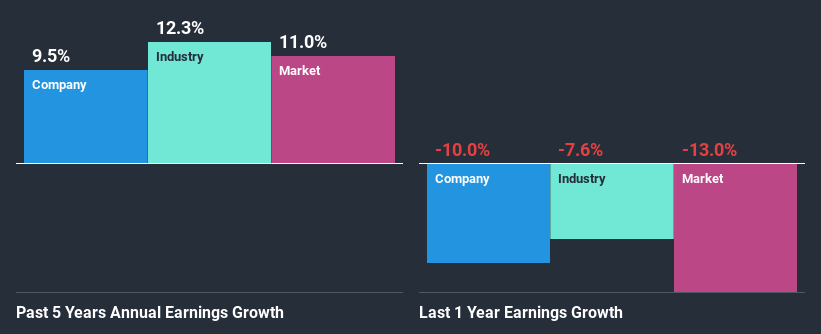Is Sabre Insurance Group plc's (LON:SBRE) Recent Stock Performance Influenced By Its Fundamentals In Any Way?
Most readers would already be aware that Sabre Insurance Group's (LON:SBRE) stock increased significantly by 12% over the past month. Given that stock prices are usually aligned with a company's financial performance in the long-term, we decided to study its financial indicators more closely to see if they had a hand to play in the recent price move. In this article, we decided to focus on Sabre Insurance Group's ROE.
Return on Equity or ROE is a test of how effectively a company is growing its value and managing investors’ money. Put another way, it reveals the company's success at turning shareholder investments into profits.
Check out our latest analysis for Sabre Insurance Group
How Is ROE Calculated?
The formula for ROE is:
Return on Equity = Net Profit (from continuing operations) ÷ Shareholders' Equity
So, based on the above formula, the ROE for Sabre Insurance Group is:
16% = UK£44m ÷ UK£272m (Based on the trailing twelve months to June 2020).
The 'return' is the amount earned after tax over the last twelve months. That means that for every £1 worth of shareholders' equity, the company generated £0.16 in profit.
What Is The Relationship Between ROE And Earnings Growth?
Thus far, we have learned that ROE measures how efficiently a company is generating its profits. Depending on how much of these profits the company reinvests or "retains", and how effectively it does so, we are then able to assess a company’s earnings growth potential. Generally speaking, other things being equal, firms with a high return on equity and profit retention, have a higher growth rate than firms that don’t share these attributes.
Sabre Insurance Group's Earnings Growth And 16% ROE
To begin with, Sabre Insurance Group seems to have a respectable ROE. Further, the company's ROE compares quite favorably to the industry average of 12%. This probably laid the ground for Sabre Insurance Group's moderate 9.5% net income growth seen over the past five years.
As a next step, we compared Sabre Insurance Group's net income growth with the industry and were disappointed to see that the company's growth is lower than the industry average growth of 12% in the same period.
Earnings growth is an important metric to consider when valuing a stock. It’s important for an investor to know whether the market has priced in the company's expected earnings growth (or decline). This then helps them determine if the stock is placed for a bright or bleak future. What is SBRE worth today? The intrinsic value infographic in our free research report helps visualize whether SBRE is currently mispriced by the market.
Is Sabre Insurance Group Making Efficient Use Of Its Profits?
The high three-year median payout ratio of 65% (or a retention ratio of 35%) for Sabre Insurance Group suggests that the company's growth wasn't really hampered despite it returning most of its income to its shareholders.
Along with seeing a growth in earnings, Sabre Insurance Group only recently started paying dividends. Its quite possible that the company was looking to impress its shareholders. Based on the latest analysts' estimates, we found that the company's future payout ratio over the next three years is expected to hold steady at 76%. Accordingly, forecasts suggest that Sabre Insurance Group's future ROE will be 16% which is again, similar to the current ROE.
Conclusion
On the whole, we do feel that Sabre Insurance Group has some positive attributes. The company has grown its earnings moderately as previously discussed. Still, the high ROE could have been even more beneficial to investors had the company been reinvesting more of its profits. As highlighted earlier, the current reinvestment rate appears to be quite low. With that said, the latest industry analyst forecasts reveal that the company's earnings growth is expected to slow down. Are these analysts expectations based on the broad expectations for the industry, or on the company's fundamentals? Click here to be taken to our analyst's forecasts page for the company.
This article by Simply Wall St is general in nature. It does not constitute a recommendation to buy or sell any stock, and does not take account of your objectives, or your financial situation. We aim to bring you long-term focused analysis driven by fundamental data. Note that our analysis may not factor in the latest price-sensitive company announcements or qualitative material. Simply Wall St has no position in any stocks mentioned.
Have feedback on this article? Concerned about the content? Get in touch with us directly. Alternatively, email editorial-team@simplywallst.com.

 Yahoo Finance
Yahoo Finance 
